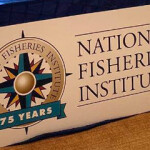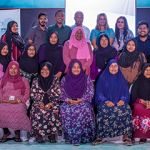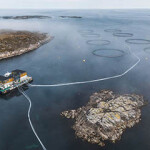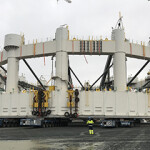Lumpfish production becoming big business in Norway
In 2016, the world’s supply of farmed salmon fell by almost 10 percent as a result of sea lice infestations. The pest’s economic impact has been estimated at EUR 0.10 to 0.20 (USD 0.11 to 0.23) per kilogram of salmon produced, with total losses of around EUR 300 million (USD 340 million) per year.
Sea lice, which have found to be prevalent in the Atlantic salmon farming industries in Norway, Scotland, Ireland, Canada, and Chile, affect the health, welfare, and quality of farmed fish, and between their possible transferral to wild salmon populations and the deleterious effects of anti-sea lice treatments, can cause harm to the environment.
Lumpfish (Cyclopterus lumpus) are becoming the salmon farming industry’s weapon of choice in the battle against sea lice, and are in high demand as a cohabiting “cleaner fish,” particularly in Norway.
An estimate by SeafoodSource puts the number of lumpfish producers in Norway at around 40, many of which are new start-ups attracted by the high prices being achieved for the strange-looking blue fish.
In 2016, commercial production of lumpfish rose to well over 30 million juveniles, up from just a few thousand fish in 2010. As a result, lumpfish are now the third-largest farmed fish species in Norway. The value of a vaccinated 50-gram lumpfish is around NOK 22 (USD 3.34, EUR 2.56) but established producers fear that prices will drop as more production facilities come onstream.
Wrasse (Labridae) are also in the salmon farmers’ tool chest and have been used for sea lice control for more than 30 years. However, they tend to become inactive in winter, whereas lumpfish continue to feed on sea lice at low temperatures. Most farmers use a combination of the two fish, with the proportions depending on their location and sea temperatures.
The boost in cleaner fish production and their expanded use in Norway has resulted in an increased focus on their welfare, and the Norwegian Food Safety Authority has started a dedicated campaign that will improve monitoring over the next year.
The larger Norwegian companies have multiple owners, many of them from the salmon farming industry, who prefer to tie in supply rather than buy on the spot market. Namdal Rensefisk for example, one of the largest lumpfish producers, is owned by salmon farming companies Bjørøya Fiskeoppdrett, Marine Harvest, Midt Norsk Havbruk, Nova Sea, and Emilsen Fisk, and specialist breeding company AquaGen.
AquaGen recently took up the challenge of breeding lumpfish in collaboration with Namdal Rensefisk. According to AquaGen researcher Maren Mommens, the current focus is on improving lumpfish health, durability, and efficiency, since the survival of these fish is essential if they are to effectively control sea lice infection levels on salmon farms.
“We are delighted to have initiated a collaboration with Namdal Rensefisk, which has built a state of the art broodstock unit alongside its lumpfish production facilities. This will play an important part in the new breeding program,” AquaGen CEO Nina Santi told SeafoodSource.
Namdal Rensefisk started producing lumpfish in July 2016, and by June 2018 had produced more than 2.5 million fish. The company now anticipates an annual production of two million lumpfish.
In Wales, lumpfish producer Ocean Matters has introduced a lumpfish certification label, through which it aims to make restaurateurs and consumers more aware of how the industry addresses the biological challenge of sea lice through co-habitation strategies.
“We believe that salmon farmers who choose lumpfish over mechanical treatments for salmon delousing should be recognized and celebrated for their commitment to fish welfare and environmental stewardship. This is why we created our certification program to support customers’ efforts to achieve a sustainable future for salmon farming,” Ocean Matters Chief Executive and Co-Founder Werner Forster told SeafoodSource. “We are excited to be the first to initiate this program and to play a part in addressing the sealice challenge by producing a natural solution for the benefit of fish farmers, consumers and the environment.”
Ocean Matters, which started trading at the end of 2016, recently secured funding to help double its current lumpfish production capacity from two million to four million in an effort to meet growing demand from the market in the United Kingdom.






Share